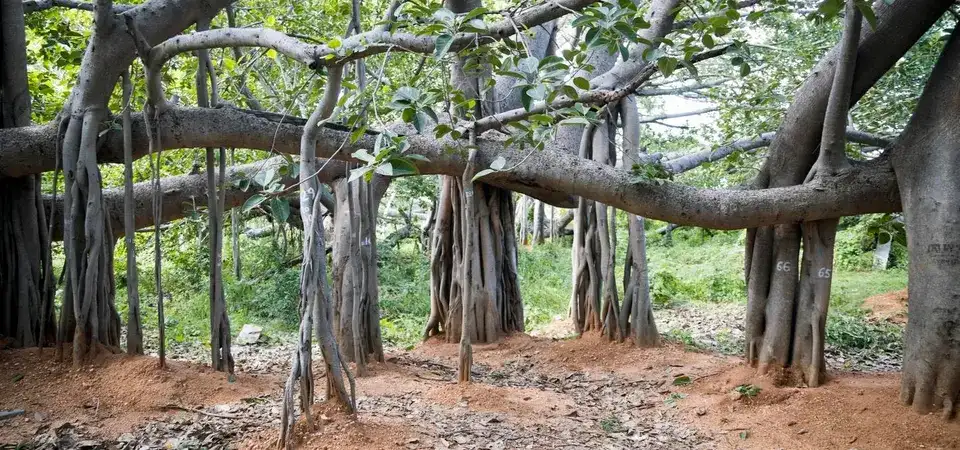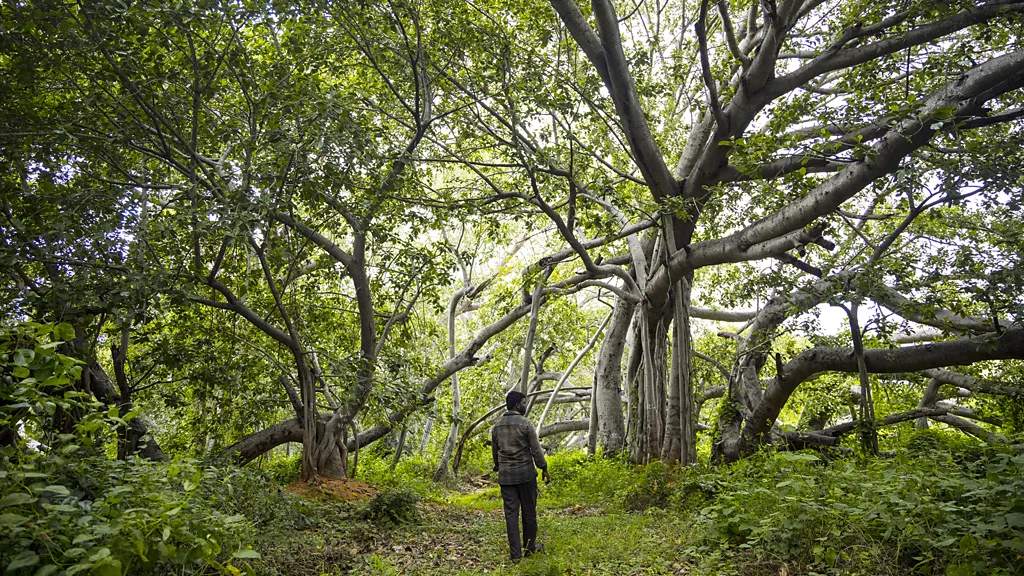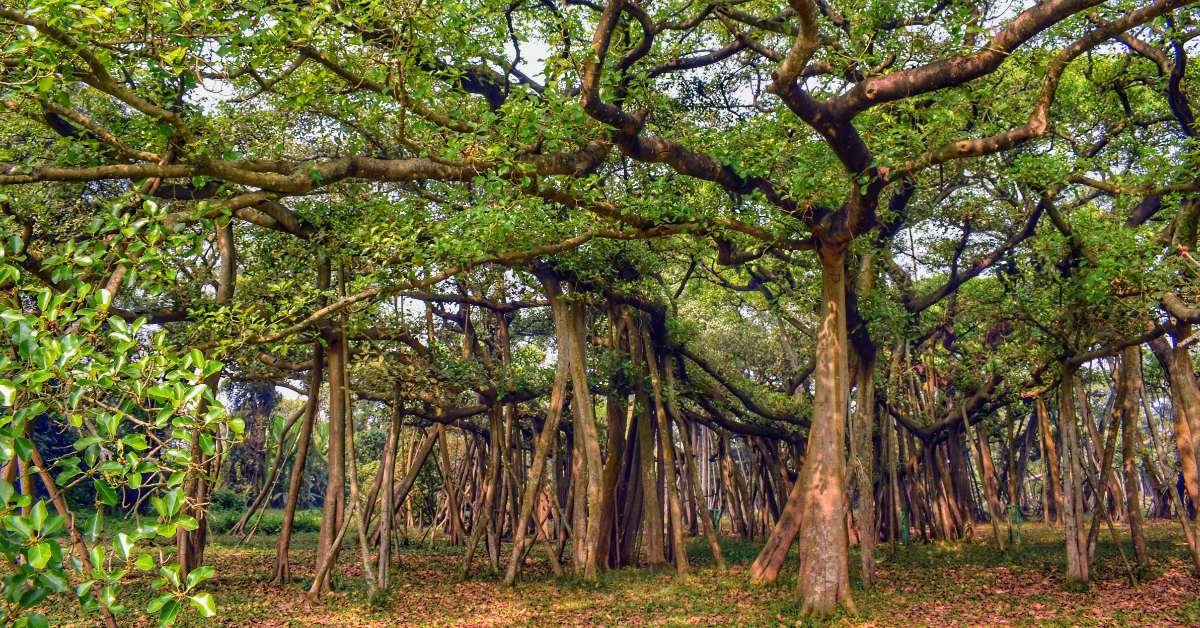Imagine a single tree so vast that it could cover four football fields combined. That’s Thimmamma Marrimanu — a 550-year-old banyan tree in Andhra Pradesh’s Anantapur district, certified by Guinness World Records in 1989 as the world’s largest tree canopy.
Spanning an incredible 19,107 square meters, this ancient giant dwarfs even the famed General Sherman Tree in California, which, despite its towering height of 275 feet, covers just 1,487 square meters. But while the Sherman Tree rises toward the sky, Thimmamma Marrimanu spreads outward, extending its reach through aerial roots that grow into new trunks.

What makes this living wonder expand the way it does? Read on to discover the secrets of one of nature’s greatest marvels.
A tree with many lives
What makes this banyan unique is its growth pattern. Unlike typical trees that grow vertically, it expands horizontally through aerial roots that descend from its branches, creating new trunks as they touch the ground. These aerial roots act as natural pillars, enabling the tree to spread while maintaining stability. Today, these prop roots have formed over 1,000 additional trunks, all connected to the mother tree.
The cultural connection
The tree’s name carries a cultural significance that dates back centuries. It is named after Thimmamma, a woman who, according to local legend, performed sati (self-immolation) on her husband’s funeral pyre in the 15th century; marrimanu means ‘banyan tree’ in Telugu. The tree is believed to have sprouted from one of the poles of her funeral pyre, making it not just a botanical wonder but a symbol of devotion in local folklore.

The banyan, a type of strangler fig, has a distinct way of growing. Its seeds take root in the crevices of host trees, sending slender roots downward while its branches stretch toward the sky. Over time, these roots thicken and weave together, transforming into sturdy trunks of their own. This incredible adaptability allows the banyan to thrive, even in the harshest conditions.
Despite facing multiple cyclones, the tree stands strong, continuing to grow and expand. Nestled between two mountains in an open agricultural clearing, it has flourished without obstacles, spreading so vast that it looks like an entire forest — yet, it remains a single, living organism.
A living ecosystem
The banyan serves as a keystone species in its environment, providing shelter and sustenance to numerous birds, bats, and insects. Its extensive root system prevents soil erosion, while its massive canopy creates a microclimate that benefits the surrounding agricultural land.
Conservation and future
The Andhra Pradesh Forest Department has implemented various measures to protect this natural wonder, including protective fencing and dedicated pathways for visitors. While Thimmamma Marrimanu stands as a symbol of resilience, adaptation, and nature’s ability to create its own support system, it also serves as a reminder to protect and preserve our natural heritage.
Edited by Khushi Arora
